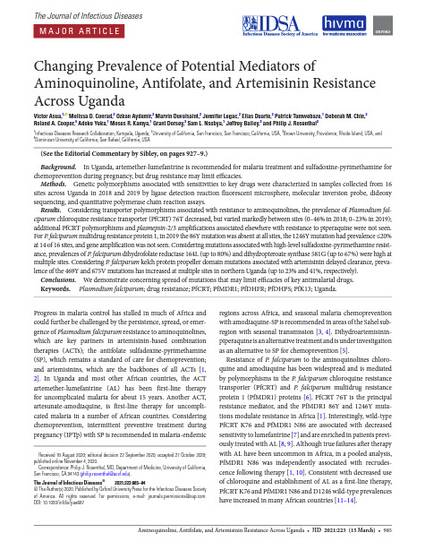
BACKGROUND: In Uganda, artemether-lumefantrine is recommended for malaria treatment and sulfadoxine-pyrimethamine for chemoprevention during pregnancy, but drug resistance may limit efficacies.
METHODS: Genetic polymorphisms associated with sensitivities to key drugs were characterized in samples collected from 16 sites across Uganda in 2018 and 2019 by ligase detection reaction fluorescent microsphere, molecular inversion probe, dideoxy sequencing, and quantitative polymerase chain reaction assays.
RESULTS: Considering transporter polymorphisms associated with resistance to aminoquinolines, the prevalence of Plasmodium falciparum chloroquine resistance transporter (PfCRT) 76T decreased, but varied markedly between sites (0-46% in 2018; 0-23% in 2019); additional PfCRT polymorphisms and plasmepsin-2/3 amplifications associated elsewhere with resistance to piperaquine were not seen. For P. falciparum multidrug resistance protein 1, in 2019 the 86Y mutation was absent at all sites, the 1246Y mutation had prevalence ≤20% at 14 of 16 sites, and gene amplification was not seen. Considering mutations associated with high-level sulfadoxine-pyrimethamine resistance, prevalences of P. falciparum dihydrofolate reductase 164L (up to 80%) and dihydropteroate synthase 581G (up to 67%) were high at multiple sites. Considering P. falciparum kelch protein propeller domain mutations associated with artemisinin delayed clearance, prevalence of the 469Y and 675V mutations has increased at multiple sites in northern Uganda (up to 23% and 41%, respectively).
CONCLUSIONS: We demonstrate concerning spread of mutations that may limit efficacies of key antimalarial drugs.
Available at: http://works.bepress.com/roland_cooper/71/
